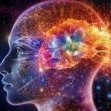Leaderboard
Popular Content
Showing content with the highest reputation on 11/02/24 in all areas
-
A few key statistics. Abortion is legal in Canada through all nine months of pregnancy, nevertheless no providers except hospitals offer care beyond 23 weeks. 90% of abortions are done in the first 12 weeks of pregnancy, while less than 1% beyond 21+ weeks. Reasons for late-stage abortions are: fetus gravely or fatally impaired; woman’s life or physical health at risk; abusive relationship; children or young teens unaware of pregnancy or in denial. I contend that this statistical picture reflects the position of a majority of Canadians on abortion. Having one is acceptable in an early term pregnancy while proceeding with one for a non-medical reason afterward, much less acceptable. I also contend that there would be a more robust discussion over a late-stage termination in the case of an abusive relationship and in children or young teens as the fetus would be viable then. I am almost certain that adoption would be brought into light as a substitute for abortion.2 points
-
So we have Maxwell's hexagonal aether agin. Maxwell himself rejected it and commented that it was the only mechanism he could think of or make work for the aether. But we know better today. Please note that all known carriers of charge are material. As swansont has already said there is no magic substance called charge.2 points
-
And some in the GOP are either livid that women would have the temerity to do this or in denial that they would. Their efforts to restrict their rights and threats of doing more (e.g. repeal the 19th amendment) make it clear they don’t think women should have agency. How dare they think for themselves! That’s not what these graphs say. Percentages are not numbers. From what I’ve read, numbers are up compared to earlier elections, and some early voters were election-day voters last time. Also, early-vote rules changed in some states. By only looking at a little bit of the data this is indistinguishable from cherry-picked propaganda. You should also link to your source, not just name it. Do better.1 point
-
Clearly your second childhood has arrived. Only children will say Mom my piece of pie is smaller than his. 😀1 point
-
And there was I getting ready to solve the rest of the millenium problems before bedtime. 😀 Surely that is self contradictory ? If we can detect effects then isn't that how we detect anything ?1 point
-
1 point
-
Glad we don't have to cover the distinction between real and virtual particles you have that part correct. +11 point
-
I wrote the following before seeing the other comments and problems. Some very good points and I’ll have to go and study them but am not sure I’ll be able to give answers. In the meantime, some more background. Part 1 of my description discusses pretty well what I’ve said so far. I’ve missed out some of the description so this is from the end of Part 1: The charge pairs alongside the central line but perpendicular to the direction of the paper also try to follow the central pairs round. They align 'end on', however, and briefly gyrate clockwise (call it “north”) or anticlockwise (“south”), as in Figure 3. So, perpendicular to the electric wave (y direction) and distance (x direction) is a magnetic wave in the z direction. … The 'wobbling' of the surrounding charge pairs appears as virtual photons, which must exist for a time <ħ/2ΔE or they would form actual photons. We cannot detect virtual photons but suspect they are there by their effects. They tumble out at speed c, leaving a brief Catherine-wheel-like trail approximately the photon's wavelength across as it travels along its path. Part 2 discusses photons with enough energy to form electrons and protons. Yes I’ve purposely avoided mentioning the aether, I knew I wasn’t fooling anyone though . I’d not come across the hexagonal aether, interesting. I’ve read that Einstein was comfortable with the aether given certain conditions that I totally failed to understand. If Maxwell used it to develop his equations, it has to have something going for it. From Wiki Aether theories: Physicist Robert B. Laughlin wrote: "The word 'ether' has extremely negative connotations in theoretical physics because of its past association with opposition to relativity. This is unfortunate because, stripped of these connotations, it rather nicely captures the way most physicists actually think about the vacuum. ..." We may know better now as you say, but I’ve not seen a description that is half way understandable without actually having a degree in the subject we’re supposed to be studying. There look to be just two premises: that the +/-ve charge pairs underlie space and can rotate to form photons, and that they don’t collapse into each other. The rest seems to follow. I’ve often seen the aether being dismissed because of Occam’s Razor. I’d say quite the opposite – it seems to give a simple model for a lot of physics theories (virtual photons, gravity etc.) Relativity must be the definitive way to visualize things, but that’s just not accessible to people beginning study. I’m not really proposing charge as a magic substance, rather a property of the charge pairs. On second thoughts they may well have mass – as I say Part 2 of my text discusses photons with enough energy to produce electrons and protons, which indeed do have mass.1 point
-
Looks like a theoretical solution in search of a problem.1 point
-
Ah, now your last idea could have something to it. There you certainly do want to convert a slow oscillating motion into a faster rotary motion.1 point
-
thanks for pointing that out! It really helps me clarify why the author chose the title **"Unbreakable SU(3) Vacuum Atoms"** instead of just saying "protons." You see, in the whimsical world of quantum chromodynamics (QCD), protons aren't just simple, solid spheres, they're more like tiny, energetic beehives buzzing with activity. Inside each proton, quarks are zipping around, held together by massless gluons, the carriers of the strong force. These gluons are like the honey that holds the hive together, and they obey the rules of the SU(3) symmetry, which, by the way, is as unbreakable. This unbroken SU(3) symmetry ensures that gluons remain massless and confined within the proton's volume. Now, why does this matter? Well, when we're trying to understand the **vacuum energy density** of the universe, the so-called cosmological constant problem, we need to consider the quantum fluctuations that contribute to this energy. By focusing on these massless gluons confined within the proton volume, the author shifts the spotlight from the mass of protons (which would indeed add up to an impossibly massive universe if counted naively) to the energetic dance of gluons inside. It's like appreciating the energy of a party not by counting the guests (which could make the place seem overcrowded) but by enjoying the music and dancing happening within the room. The room's size (the proton volume) stays the same, but the vibe comes from the massless gluons grooving to the beat of unbroken SU(3) symmetry. So, by titling the author work **"Unbreakable SU(3) Vacuum Atoms,"** the author cleverly highlights the role of these massless gluons and the significance of the unbroken symmetry. It's not just about protons as particles with mass; it's about the fundamental forces and fields that permeate space at the smallest scales without overloading the universe with extra mass. This approach allows us to calculate the vacuum energy density more accurately without ending up with a universe that's heavier than a sumo wrestler at an all-you-can-eat buffet! It addresses the cosmological constant problem by considering the contributions of massless gluon fields confined within proton volumes, all thanks to the unbreakable SU(3) symmetry.1 point
-
I think you are adding wrong facts on author's concept....a photon exist but it's massless ....your using proton mass which is not in the arguments....it's a volume derived from SU(3) symmetry that is directly related to proton mass.....people here talk about mass...and all they can tell you about it is, Higgs field, dark matter has mass but not through Higgs field...it's just sad 😢 that people can't tolerate challenging ideas that don't conform to their thinking...the only option is to apply mud on others concepts.1 point
-
Exactly. And it would share cosmological equation of state with ordinary matter. It would be another garden-variety type of matter to be detected in scattering experiments. Why bother with superconductivity if the idea doesn't even leave the ground?1 point
-
I decided to do a bit of calculations The observable Universe mass using Critical density is estimated to be \[10^{53} kg.\] So using \(10^{123}\) protons at 936 MeV The corresponding mass is \[1.669 ×10^{96}\] kg Talk about a HUGE mismatch lol thought I would share that. I seriously hope the author isn't using protons or neutrons the theory would automatically be invalid simply on that calculation. There simply put absolutely no way possible to solve the cosmological constant problem with such a large mismatch none whatsoever superconductivity or not. It's literally impossible with 10^123 protons or neutrons Anyone want to try simply multiply 936 MeV times 10^{123} then convert to Kg with e=mc^21 point
-
You know, physics is a bit like trying to understand a grand symphony while sitting in the orchestra pit. Sometimes, we're so caught up playing our own instruments that we forget to listen to the music as a whole. The third law of thermodynamics and experimental phenomena like the Meissner effect aren't just notes on a page, they're the melodies we've heard and verified time and time again. Now, I understand that after decades of sailing the seas of mainstream physics, charting courses towards supersymmetry, the multiverse, and **extra dimensions, it might feel like we're being asked to abandon ship in favor of some new vessel that seems untested. But here's the thing: if the ship hasn't reached the shore after all this time, maybe it's worth checking if there's a leak. Supersymmetry and its friends are fascinating, they're like the mysterious islands marked on ancient maps with dragons and sirens. Exciting, but we've yet to actually land on them. Meanwhile, the solid ground of experimentally verified physics is right beneath our feet. The low-energy vacuum near absolute zero isn't some abstract concept; it's a realm we've explored in laboratories. It's like finding a hidden room in a house we thought we knew inside out. Just because it's been overlooked doesn't mean it's not real or significant. I get that it's hard to entertain the idea that years of research might not lead us to the promised land. But science isn't about clinging to familiar shores; it's about daring to set sail for new horizons when the old maps don't quite line up with the stars. So, rather than seeing this as throwing away valuable work, think of it as tuning our instruments to a different key, one that's in harmony with what we've actually observed. Let's not ignore a potentially beautiful melody just because it's not the one we've been rehearsing.1 point
-
While it is admittedly unscientific, and there don't seem to have been any good studies of the effects of trace amounts of alcohol. I think its worth pointing out that humans evolved in an environment which provided a more or less constant exposure to trace amounts of alcohol in their diet (natural fermentation of food in the absence of preservatives or refrigeration). So, if we gained anything from our evolution, it could well be a tolerance for low levels of alcohol.1 point
-
There is a bit of an understanding in how toxicity and safe limits (or no-effect concentrations) are determined (specifically this is a lack of data issue, not so much of a clear esatblished low-level toxicity profile), but I the short version is that no it does not mean that tiny amounts will lead to long-lasting effects (typically is related to cancer effects, which makes things even more problematic evidence-wise). In short, we do not have data on trace amount, and it is unlikely to do any harm over your regular diet. I will note, for example, that you likely have (very) low levels of alcohol in your gut right now. We carry a number of bacteria and yeasts in our gut that can produce some levels of ethanol as part of their regular metabolism (there is also a rare so-called auto-brewery syndrome, but that is probably not part of this discussion). But to put it really short, other factors in your diet (e.g. sugar) are likely going to have more impact on your overall cancer risk than a the residual ethanol levels you find in bread or vinegar.1 point
-
The Angstrom is an old unit about the size on a whole atom. Or if you lined up 100,000 atomic nuclei in a row that would be the size of one angstom. That is how much smaller a nucleus is than an atom. And protons and neutrons are smaller still, may be half this size.1 point
-
As a former medical technologist, I don’t recognize the structure as any of the usual crystals or hyaline casts found in urine and it doesn’t look microbial. Unless there are more similar structures, I would guess it is a bit of foreign material that drifted into the sample. Technically known as microscopic junk. https://laboratoryinfo.com/types-of-crystals-in-urine/1 point








